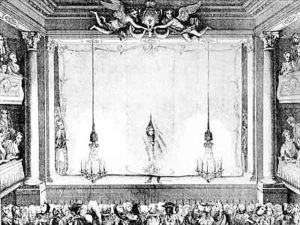Coypel, Charles Antoine Paintings
Charles Antoine Coypel was a French painter, born on July 11, 1694, in Paris. He was the son of Antoine Coypel, who was also a respected artist and the director of the French Academy in Rome, and the grandson of Noël Coypel, another notable French painter. Given this artistic lineage, it's no surprise that Charles Antoine was exposed to art and its practices from a very young age.
Coypel began his formal artistic training under his father and quickly developed a style that blended the grand classical tradition with more contemporary elements of the Rococo. His early work was marked by vibrant colors and a dynamic use of light, which became characteristic of his mature style. In 1715, at the age of 21, he was admitted to the Académie Royale de Peinture et de Sculpture, an institution that played a central role in the artistic life of France.
Over the years, Coypel gained significant recognition and was commissioned for various prominent projects. In 1734, he was appointed as the First Painter to King Louis XV, a prestigious position that not only acknowledged his talent but also granted him considerable influence in the French art world. He was involved in the decoration of several royal residences, including the Palais-Royal and the Château de Versailles, where his work contributed to the splendor of these environments.
One of Coypel's most notable contributions to the arts was his series of paintings illustrating scenes from the epic poem 'Don Quixote' by Miguel de Cervantes. These works were highly regarded for their narrative expressiveness and their sensitive portrayal of the characters. The series helped to popularize the literary work in France and reflected Coypel's interest in integrating literary themes into visual arts.
In addition to his painting career, Coypel held various administrative positions within the Académie Royale, including that of director in 1747. His role in the academy allowed him to influence French artistic standards and the training of young artists. Coypel's legacy was not only in his own works but also in his impact on the French artistic community and the shaping of the Rococo style.
Charles Antoine Coypel died on June 14, 1752, in Paris. His works continue to be celebrated for their elegance, narrative charm, and the blend of classical and Rococo elements that define the French art of the period.
